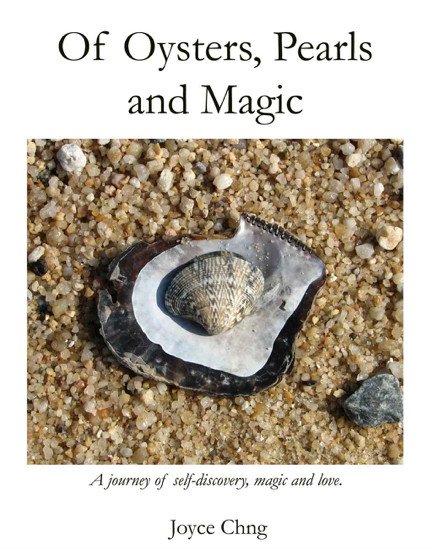This post is my entry for the Desi and SEA Book Review Contest organised by @didic.
This contest asked entrants to review stories written by authors of Desi (Indian subcontinent) or South East Asian descent. After looking into a few different options, I chose to read Joyce Chng's heart-wrenching novella Of Oysters, Pearls and Magic. I use the word "heart-wrenching" because at this very moment – as I sit at my desk, just having finished the novella – I can feel a slight heaviness in my chest and a twisting sensation in my gut. I'm marvelling over the poignancy of the novella's ending, and everything it has evoked within me: distant memories of grief, reflections on the relentless human will to survive and adapt – even when something immeasurably precious has been lost – and the ceaseless longing for "home" that beats within all of our hearts.

I am the daughter of oyster-divers and pearl-gatherers. I am the descendant of the first-wave immigrants from old Terra Firma, the ancient Earth planet the grandmothers of the village speak so kindly of. I am the daughter of a line of women who risk their lives to dive for the treasures of the sea, the rough-shelled bivalves that give us food and beautiful orbs of beauty.
This refrain is repeated continually throughout the remainder of the book, constantly drawing the reader's mind back to Mirra's coastal origins, regardless of how far she travels. When the novella begins, Mirra is following in the footsteps of her mother, her grandmother, and a long lineage of female ancestors before her by diving for oysters to sustain both her own household and the eager customers of a nearby metropolis. Throughout the book, this place is simply referred to as the City. Mirra faces censure, ridicule and (at times) overt hostility from her fellow villagers because she is able to use magic by forming light into circles. This ability has been considered the sole prerogative of men for many generations. The remainder of the book follows Mirra's efforts to break free of this stigma and freely claim her powers.
Of Oysters, Pearls and Magic felt like a profoundly futuristic tale in many respects, but it also contained echoes of a distant, rapidly fading past. The use of highly advanced technology is evident throughout the novella. To cite one example, the men in Mirra's village use their light magic to operate vast air ships, described as "fish." These "fish" transport the highly prized oysters found by female villagers to the bustling marketplaces of the City. Polyamory is portrayed as a widely accepted and valued lifestyle choice, on par with the choice to be monogamous. The decision to remain single is also respected. Three terms are used to describe people who are in these different states: Triads, Pairs and Aparts.
Despite the fact that women's use of magic is frowned upon in Mirra's village, women are described as holding a higher social position within the society, and the standard style of family formation practiced is polyandry. Mirra's mother has two husbands – the second of whom treats Mirra cruelly over her use of magic – and she is ultimately able to remove her second husband from the household once she has tired of him.

Image Credit: SarahTz/Flickr
The geological instability of the City, in particular – where residents live in constant fear of earthquakes and volcanic eruptions – was modelled on Japan. Meanwhile, the costumes worn by the people of Mirra's village were inspired by the traditional costumes of the Hui An tribe in China. Chng has an ancestral connection with this culture.
(The Hui An) now consider themselves part of the dominant Han culture and celebrate its festivals. A week ago, before this commentary came into being, my father told me that the Hui An culture was dying out, as the land the Hui An people lived on had gone through radical changes, thanks to China’s drive for economic and industrial success. It is a grim and ultimately saddening wake-up call. Much of what’s left in Hui An is now heavily industrial, fixated on mining and tourism; it is also subsumed under a larger region. Yet there are still people who follow the traditions, something I feel should be continued for future generations.
Mirra continuously yearns to reconnect with her hometown and her childhood traditions throughout the book, even after finding a deep sense of satisfaction and belonging with her two lovers, Auri and Josh. These three characters' Triad is depicted as a profoundly affectionate, supportive and loving union. The following description of their wedding day struck me as particularly beautiful, vivid and richly evocative. I want to share it here in order to help convey the exuberant joy and respect that underpins their relationship.
I don't want to delve too deeply into the ending of the book, or how the plot unfolds throughout, as I don't want to ruin it for anyone who might be reading this review. All I will say is: if this review has piqued your curiosity, I highly encourage you to purchase Of Oysters, Pearls and Magic yourself. The Amazon.com link is available here. Living in Ireland, I accessed it via the Amazon.co.uk link. Joyce Chng's blog can be found at awolfstale.wordpress.com, if you would like to see more of her work.

